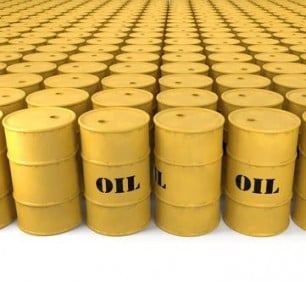Several pundits attributed yesterday's spike in oil prices to the recognition that the fight against ISIS in Iraq-Syria will be a long one.
As usual, the 30-second TV wonders missed the boat.
Of course, the ongoing chaos in the Middle East is certainly a factor. To the extent that oil traders begin to calculate its impact into their risk models, there will be an effect.
However, when it comes to what actually moves oil prices, there are more important factors now in play.
In fact, there are three major price influences these "analysts" have ignored...
The Changing Nature of Oil Prices First, U.S. inventories are coming in at the lowest levels in almost a year. After two months of overproduction, some rebalancing is taking place. There are plenty of reserves to bring up, but crude oil prices will rise a bit in the process.
First, U.S. inventories are coming in at the lowest levels in almost a year. After two months of overproduction, some rebalancing is taking place. There are plenty of reserves to bring up, but crude oil prices will rise a bit in the process.
Second, after witnessing several headlines that (inaccurately) portrayed a noticeable decline in global demand, those figures are on the rise again. The truth is by the end of this year we are going to experience the highest daily demand worldwide everrecorded.
This element is often misunderstood by many in the United States, where an accelerating largess of unconventional supply (shale, tight, and heavy oil) is often set against a perceived level of subdued demand. Western Europe is held in the same regard when it comes to demand, even more so given that the economic situation there remains more constrained.
But as I have written several times, it has been quite some time since the Western world has actually led the international demand bandwagon. The actual rise in demand is generated elsewhere, and crude oil prices follow accordingly.
The difference these days is the recognition that the price commanded in the market for crude oil does not take its bearings from any perceived shortage of supply. Those who still follow a "Peak Oil" approach have been forced to revise their reasoning. Now it's all about the availability of affordable supply.
But given the amount of extractable, unconventional oil available throughout the world and the fact that more than 80% of it is located outside North America, nobody believes they will wake up in the morning any time soon to a lack of supply.
And finally, the way geopolitical events impact oil prices has changed. A few years ago, the rise of ISIS, the ongoing civil war in Libya, and the crisis between Russia and Ukraine would have been enough to add $10 to a barrel of oil in no time.
But not any longer. Unless events physically impede the flow of oil - for example, a closing of the Strait of Hormuz between the Persian Gulf and the Arabian Sea - oil traders tend to discount the impact of geopolitical events.
Of course, here's the real harbinger for higher prices:
Uncertainty.
A prolonged crisis slowly eats away at trading complacency and influences prices at the same time. There is still a marked tendency for traders to peg prices a bit higher to offset the inability to quantify all of the causes at work.
The New "Matrix" For Oil PricesThe important point here, however, is this: Oil prices now operate under a very different matrix than they did only a few years ago.
That requires a revision in your investment strategy. Company profitability is no longer dependent simply on a rising price for the raw materials. Instead, better returns are coming from companies that do a better job of extracting, processing, transporting, and distributing product in a more efficient way.
Currently, a strong dollar has been pointed to as a reason behind subdued oil prices. Given that virtually all crude oil globally is denominated in dollars, a stronger greenback does allow for production and transit to occur at a cheaper cost.
It is not going to be as simple as price alone. A rising tide will not lift all boats.
But a crude oil pricing range of between, say, $85 and $100 a barrel will provide us with more than enough opportunities to profit. And if oil prices stray very much in either direction, there are plenty of ways to identify the best moves.
More from Dr. Kent Moors: On the face of it, it sounds like a major miscalculation - the EPA's latest rules requiring that power plants reduce emissions are actually increasing the use of higher sulfur content coal. But this situation has improved the short- to medium-term prospects for a certain niche of coal stocks...
Tags: Commodities Prices, Crude Oil Prices, energy investing, oil price, oil price spike, Oil Prices, oil prices today, price of oilThe post Oil Prices Today: Three Key Factors the Pundits Are Missing appeared first on Money Morning - Only the News You Can Profit From.


